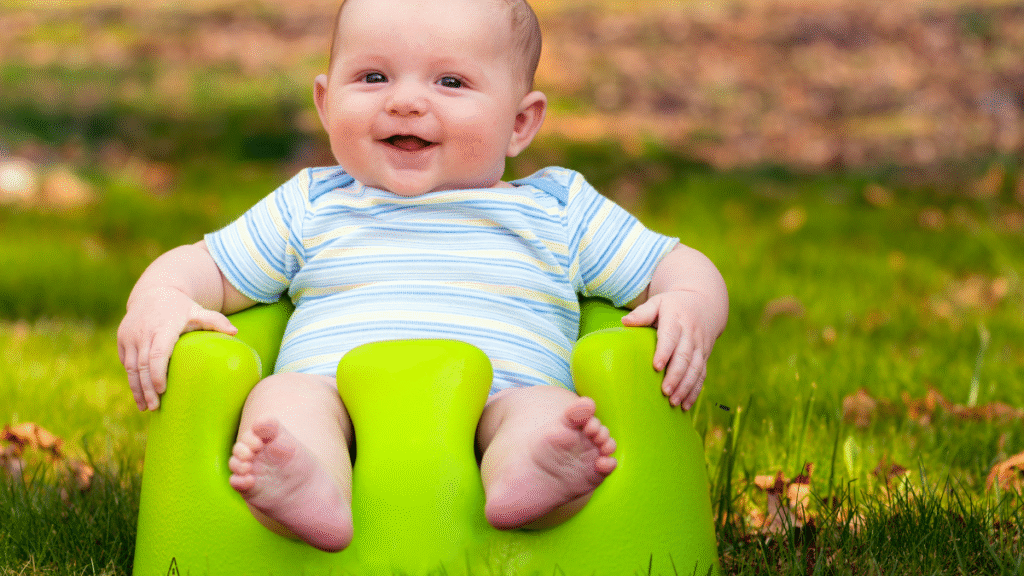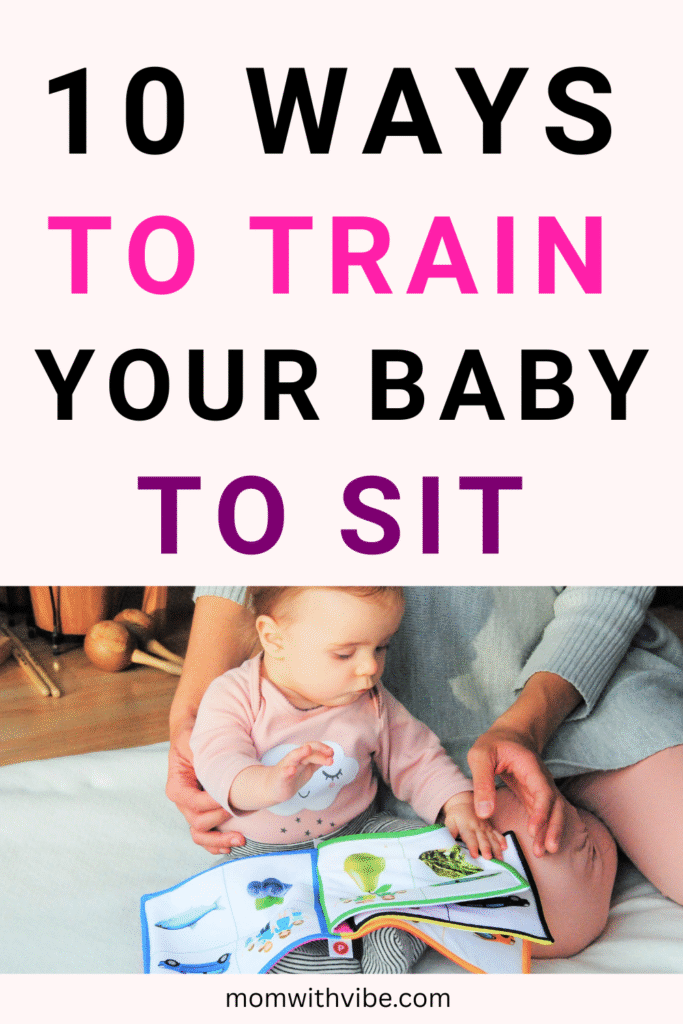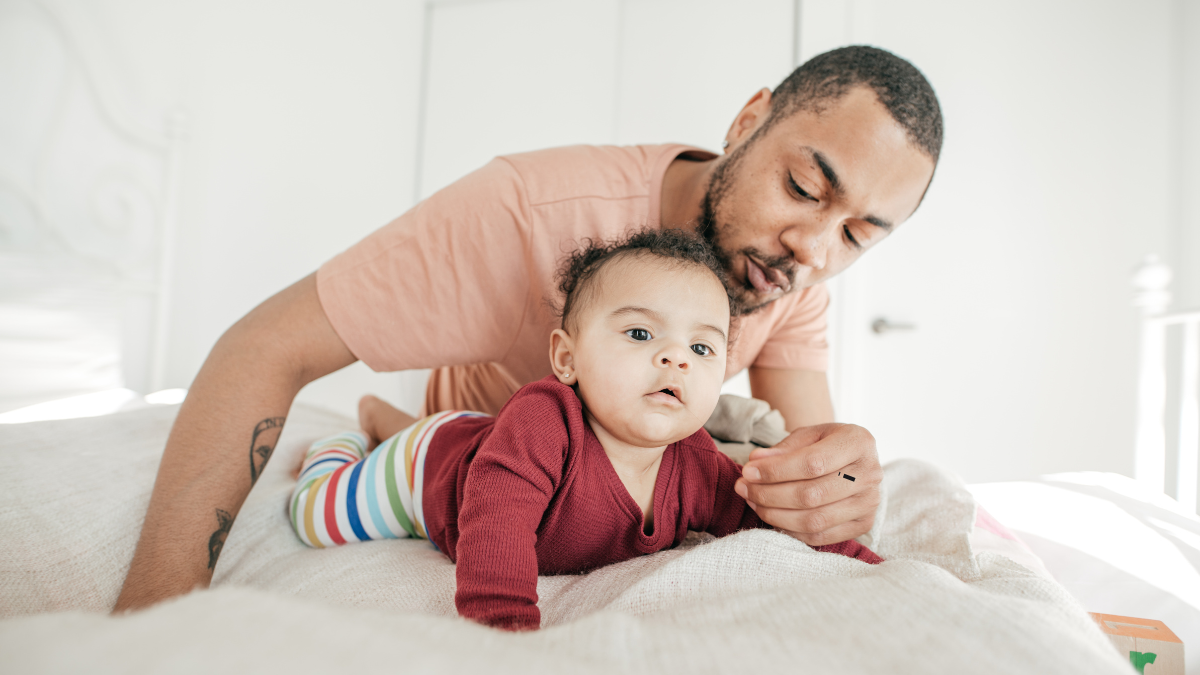When your baby can sit up on his or her own, it is an exciting milestone to watch. It not only demonstrates that they are getting stronger, but it is also the first stage of their becoming independent. However, how would you help them throughout this phase? This is the 10 best steps to train your baby to sit, with easy-to-follow and simple tips.
1. Have Lots of Tummy Time with Them
One of the best approaches to strengthening the muscles your baby needs to sit is through tummy time. It helps build neck, back, and shoulder muscles that are important when they begin sitting.
e.g. You can begin with tummy time at the earliest age, when you have a baby only a couple of days old. This can be slowly increased by increments once your baby is used to it, up to 20 minutes per session. Tummy time helps your infant to develop neck strength, develops head and shoulder muscles, and becomes accustomed to the sensation of being on the floor.
When your baby is fussy during tummy time, you could offer them one of the play mats with interesting textures or a colorful toy that would hold their interest. This is expected so that your baby can gain strength slowly, a move that will enable them to have greater control of their body in the future.
Related: How to Help Your Baby Turn Head Down
2. Between Your Legs Sit Your Babe
Your baby does not probably have the balance to sit without support yet, so you can begin by placing the baby in the middle of your legs. Hold their back, and prevent them from falling over.
e.g. Sit down on the floor, put your baby between your legs, and hold his back with your hand as he or she starts becoming acclimated to horizontal posture. This is also a position in which your baby gets the chance to lie against your legs, where they feel secure as they are just starting to gain strength in their cores and upper body.
Save the pin for later

3. Add an Extra Stability Using a Boppy Pillow
By learning to sit, your baby may need an extra bit of support in the form of a Boppy pillow or other cushions. This will allow them to feel safe and find the task less difficult with a pillow.
Example: Lay your baby on a firm surface such as a blanket and wrap the Boppy pillow around your baby to ensure that he or she remains stable and practices sitting. This additional stability may make your baby feel more secure and motivate them to sit for a longer time. There are also other ways to vary the position and use the pillow, such as supporting their back by placing the pillow behind them or balancing by keeping it in front of them.
Related: 7 Things to Do When Your Baby Is Teething
4. Promote Grabbing Toys
When sitting, encourage your baby to reach out and take toys or objects because this will help them practice balance and coordination. Have them partially out of reach so that they must lean forward to grasp the toys.
e.g.: Put a colored toy just a bit in front of your baby, and they will somehow be motivated to lean and pick the toy up. This toughens them up and makes them balanced. Gradually, aim to put the toy farther away to make your baby transfer weight using his or her abdominal muscles and lean forward.
Introducing any other textures or sounds using the toys will also get them interested in the task and will stimulate both the physical and mental involvement of your baby.
5. Allow Them Opportunity to Experiment
In a variety of ways, babies require experimenting with their bodies and their equilibrium. Allow your baby to practice sitting without holding their hand. He may fall a couple of times, but he is slowly getting there.
Example: In case your baby falls down, you must not be worried. They should be allowed time to sit and get to discuss the position at their own pace. With practice, they will eventually sit longer. Whenever your baby falls, they are in the process of learning to maintain their balance and postures. This is their learning process.
6. Make a Secure Sit Area
Place your baby on a soft surface (especially when you begin letting your baby sit up) as a play mat or carpet. This lessens the possibility of injury whenever they invariably topple over.
Take example: Create a cushioning item where your baby can learn how to sit down and move freely without fear of harsh falls. To help make the process safer and more comfortable for your baby, it is possible to use a soft mat. It can even assist them to concentrate on their movements without fear of injuring themselves.

7. Promote Sitting Forms of Play
Make sitting entertaining by playing with your baby when she is using the sitting position. This keeps them keen and equips them with the urge to practice their sitting skills.
For instance: You can sit down with your baby on the ground and interact with them using toys, and this should be made to be interactive for your baby. Have soft toys or plush animals to make the time even more enjoyable. You can sing songs or play games such as peekaboo, which can help them sit longer.
8. Phasing Out Support
Support your baby less as he or she grows stronger. Begin by softly releasing their torso when sitting, and slowly increase the time that they sustain balance in the sitting position.
Such as: Once you have several sessions of propping your baby sitting up, put only their hands in your hands or have them steady on their own for a few seconds and then offer them more support. This makes them gain confidence and strength gradually. We also need to be patient because young babies might take a longer time to master this skill.
9. Positive Reinforcement
There is a lot you can do to raise the confidence of your baby by encouraging and praising her. Write down little achievements, even sitting a couple of seconds longer or being able to keep their head up.
Example: “Wow, look at how you do sit up like a big girl!” Your positive reinforcement will go a long way in making your baby associate sitting with good time and success. When your baby feels loved and supported, he/she will begin to feel proud of themselves and would desire to continue practicing.
10. Patience and Regularity
All babies learn differently, so if your baby is not sitting up as rapidly as other kids of a similar age, you need not fret about it. Practicing regularly, take your time, and be patient.
As an example: Devote time daily to tummy time and sit practice. In a systematic manner, your child will acquire balance as well as strength, supporting him or her to sit comfortably on their own. Do bear in mind that not all babies take the same rate to progress, so keep encouraging them, and allow ample time before they achieve this milestone.
Conclusion
The way to train your baby to sit is a task that requires time, patience, and loads of encouragement. These are only some of the easiest ways to teach your baby these few things to make the process fun and motivating to achieve this exciting milestone with the help of your guidance in no time. Thus, take it easy, make every step of the way triumphant, and be grateful for such valuable moments of development!
FAQ – Frequently Asked Questions
Q: How old are babies supposed to learn to sit on their own?
A: Babies usually learn to sit on their own between 6 to 8 months of age, but that does not mean that every baby will learn more quickly. Every child is different and grows at a different rate, therefore there is nothing to worry about in case your child requires more time to achieve this milestone.
Q: My baby does not enjoy tummy time, what do I do?
A: Certain infants cry during tummy time, but one should not give up. You can experiment with shorter sessions, or tummy time can be made more fun with toys or lying on the floor with the baby, displaying to them that they can lie on their stomach. Make it a gradual process as they grow accustomed to it.
Q: How long do I have to hold my baby during sitting?
A: Initially, you will have to be absolutely supportive. After your baby is stronger, slowly limit the support you give your baby, so they can sit alone for brief moments. Gradually, they will be able to sit without support, as they will be ready.
Q: Does it occur normally that my baby falls down when he tries to sit?
A: Absolutely normal, during the process of learning to sit, babies will fall on the ground. This helps them learn the art of balancing and just the right posture by falling. Be sure that they are on a soft surface always to minimize any injury.
Q: Is it okay to teach my baby sitting before 6 months?
A: During the same time, though some babies may learn some tips on sitting earlier, at the time they are under 6 months, they have not plumped up muscles and body links to sit on their own until they reach the ages of about 6 to 8 months. The crucial thing is that your child should reveal the signs of readiness, which include holding his/her head straight.
Save the pin for later




